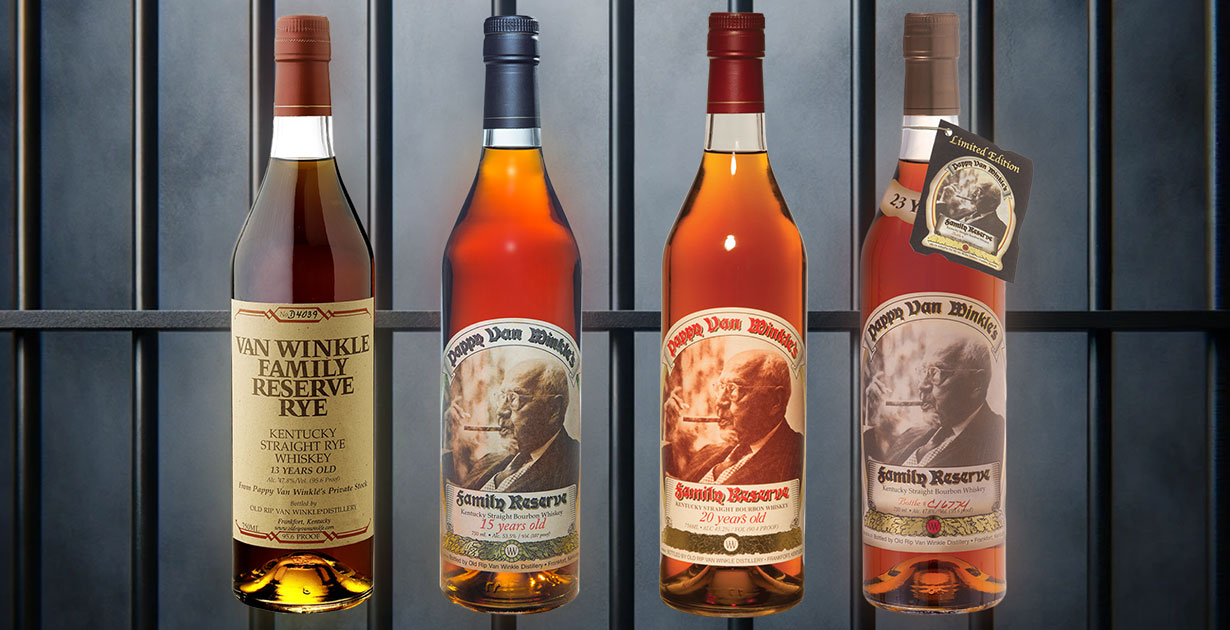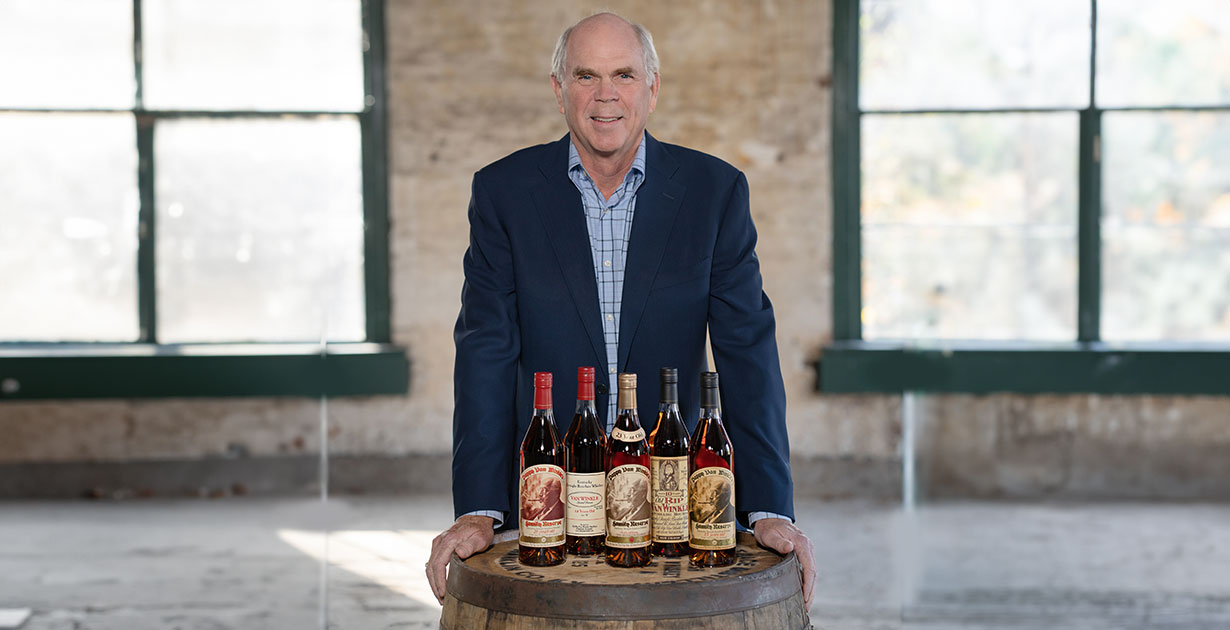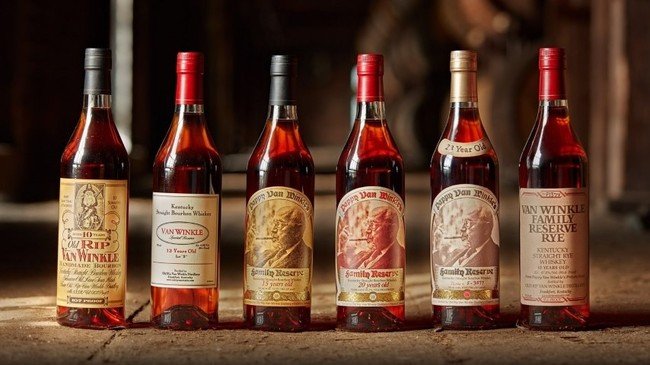Pappygate to Today: How Bourbon’s Biggest Heist Changed Collecting Forever
In the early hours of October 2013, someone broke into the Franklin County warehouse that housed some of America’s most precious liquid gold. When the dust settled, 65 cases of Pappy Van Winkle bourbon—worth an estimated $26,000 retail but potentially ten times that on the secondary market—had vanished into the Kentucky night. What became known as “Pappygate” would expose the dark underbelly of bourbon collecting and forever change how the industry thinks about security, allocation, and the cult of rare whiskey.
The Perfect Storm

To understand why Pappygate sent shockwaves through the bourbon world, you need to understand what Pappy Van Winkle represented in 2013. The brand, produced at Buffalo Trace Distillery, had already achieved mythical status among collectors. Annual releases of the 15, 20, and 23-year expressions were allocated in tiny quantities, creating a scarcity that drove prices into the stratosphere on secondary markets.
Julian Van Winkle III, whose family name graced the bottles, had built a reputation for uncompromising quality over decades. The bourbon wasn’t just rare—it was genuinely exceptional, aged in prime warehouse locations and bottled at proof points that showcased the whiskey’s complexity. For many collectors, owning a bottle of Pappy wasn’t just about the liquid inside; it was a badge of honor, proof that you were connected enough to acquire what others couldn’t.
This perfect storm of quality, scarcity, and prestige had already begun warping the bourbon market by 2013. Bottles with suggested retail prices of $130 were selling for $1,000 or more on secondary markets. Liquor stores were holding lotteries. Restaurants were charging $100 for a single pour. The theft simply crystallized what many in the industry already knew: bourbon collecting had become serious business.
The Investigation Unfolds

The Franklin County Sheriff’s Office initially treated the case like any other commercial burglary, but they quickly realized they were dealing with something unprecedented. The thieves had demonstrated intimate knowledge of the warehouse layout and knew exactly which barrels to target. This wasn’t random—it was surgical.
The investigation revealed a conspiracy that reached into multiple states. Mark Searcy, a Franklin County deputy sheriff, was eventually charged as the ringleader. Searcy had allegedly used his law enforcement connections to gain access to the warehouse and coordinate the theft. The stolen bourbon was funneled through a network that included Gilbert Curtsinger, a longtime Wild Turkey distillery employee who became the operation’s bourbon authenticator.
The case took nearly two years to fully unravel, during which time rumors swirled through bourbon communities online and at whiskey bars across the country. Every bottle of Pappy that appeared for sale came under scrutiny. Serial numbers were checked against stolen lists. The paranoia was palpable.
When arrests finally came in 2015, the bourbon world watched in fascination as details emerged. Text messages revealed casual discussions about moving “liquid gold.” Bank records showed large cash deposits coinciding with bourbon sales. The investigation painted a picture of an operation that treated rare whiskey like a commodity to be harvested and sold.
The Ripple Effects
Pappygate’s impact extended far beyond the immediate crime. Distilleries across Kentucky began reassessing their security protocols. Buffalo Trace installed new surveillance systems and restricted warehouse access. Other producers followed suit, implementing everything from biometric locks to armed security patrols.
But the changes went deeper than physical security. The theft forced the bourbon industry to confront uncomfortable questions about the secondary market they had inadvertently created. When bottles were selling for thousands of dollars, was it realistic to expect warehouse workers earning $30,000 a year not to be tempted?
Insurance companies began treating rare bourbon stocks like fine art or precious metals, requiring detailed inventories and specialized coverage. Some distilleries started using blockchain technology to track bottles from barrel to consumer. The casual, trust-based culture that had defined Kentucky bourbon for generations was giving way to corporate-level security measures.
The Secondary Market Explosion
If anything, Pappygate accelerated trends that were already reshaping bourbon collecting. The theft demonstrated just how valuable these bottles had become, validating the investment thesis that was driving much of the speculation. Rather than cooling the market, the heist seemed to add an element of danger and excitement that attracted new collectors.
Online communities dedicated to bourbon trading exploded in membership after 2015. Facebook groups with names like “Bourbon Secondary” and “Unicorn Auctions” became digital marketplaces where bottles changed hands for eye-watering sums. The theft had proven that bourbon wasn’t just a drink—it was an asset class.
Auction houses took notice. Sotheby’s and Christie’s began dedicating entire sales to American whiskey. In 2020, a bottle of 1926 Macallan set a world record by selling for $1.9 million, but bourbon wasn’t far behind. Bottles of pre-fire Old Forester and antique Stitzel-Weller began commanding five-figure prices.
The institutional money followed. Investment funds began treating bourbon like vintage wine or rare art, buying entire collections and holding them in climate-controlled warehouses. What had started as a hobby for whiskey enthusiasts was becoming a legitimate alternative investment strategy.
The Modern Collecting Landscape
Today’s bourbon collecting scene bears little resemblance to the relatively innocent hobby that existed before Pappygate. Technology has transformed both security and authentication. QR codes and NFC chips help verify provenance. Blockchain ledgers track ownership history. Some bottles now come with tamper-evident packaging that rivals pharmaceutical products.
The financial stakes continue to escalate. Recent sales have seen bottles of 1970s-era bourbon exceed $50,000 at auction. Even modern releases like Buffalo Trace Antique Collection bottles that retail for $99 regularly sell for $500-800 on secondary markets. The speculation that Pappygate highlighted has become the new normal.
Distilleries have adapted by expanding their premium offerings. Knowing that scarcity drives value, producers have launched increasingly limited releases with elaborate packaging and marketing campaigns. The annual bourbon release season now resembles a luxury goods launch more than a simple product introduction.
The Cultural Shift
Perhaps Pappygate’s most lasting impact has been cultural. The theft marked the moment when bourbon collecting transitioned from a gentleman’s hobby to a high-stakes game. The old culture of sharing and generosity—where finding a rare bottle meant buying rounds for friends—has been largely replaced by investment-minded behavior.
Newer collectors often approach bourbon like stock traders, studying allocation patterns and release schedules to maximize their purchasing power. Social media has amplified this trend, with collectors posting photos of their “hauls” and “unicorns” like trophies. The simple pleasure of drinking good whiskey sometimes feels secondary to the thrill of acquisition.
Long-time enthusiasts frequently lament this change. They remember when bars stocked 20-year Pappy as a regular offering and when finding a good bottle meant enjoying it with friends rather than calculating its resale value. The community aspect that once defined bourbon culture has been complicated by the knowledge that every bottle could be worth hundreds or thousands of dollars.
Law Enforcement Adapts
The bourbon industry’s transformation hasn’t gone unnoticed by law enforcement. Police departments in Kentucky now have officers who specialize in spirits theft. They maintain databases of stolen bottles and work closely with auction houses to identify suspicious sales.
The FBI has created task forces dedicated to investigating bourbon-related crimes. These range from warehouse thefts to sophisticated counterfeiting operations. The agency’s Art Crime Team, traditionally focused on paintings and sculptures, now includes specialists in rare spirits authentication.
International cooperation has become necessary as the market has globalized. Stolen American bourbon now shows up in European and Asian auction houses, requiring coordination between multiple law enforcement agencies. The days when bourbon theft was a local problem are long gone.
Looking Forward
As we approach the tenth anniversary of Pappygate, its influence on bourbon culture continues to evolve. New collectors entering the market have only known the post-theft landscape, where security is paramount and every bottle comes with a detailed provenance story.
The industry has largely embraced these changes, recognizing that the financial success of rare bourbon has elevated the entire category. Premium expressions that might have struggled to find an audience in 2013 now sell out immediately upon release. The halo effect of ultra-rare bottles has lifted sales across the bourbon spectrum.
Yet questions remain about sustainability. Can a market built on artificial scarcity and speculative investment continue to grow indefinitely? What happens when the bubble inevitably bursts? These are the challenges facing bourbon producers and collectors as they navigate a landscape permanently altered by sixty-five missing cases of Pappy Van Winkle.
The Lasting Legacy
Pappygate represented more than just a theft—it was a watershed moment that exposed how dramatically bourbon culture had changed. The case revealed a world where warehouse workers were willing to risk their freedom for bottles of whiskey, where law enforcement officers could be corrupted by liquid gold, and where the line between collecting and investing had completely disappeared.
The bourbon that was stolen that October night in 2013 was eventually recovered, but the industry it came from was gone forever. In its place emerged a more sophisticated, security-conscious, and financially driven market that would have been unrecognizable to earlier generations of bourbon lovers.
Whether this transformation represents progress or loss depends on your perspective. For investors and serious collectors, the modern bourbon market offers unprecedented opportunities and protections. For casual enthusiasts, it can feel like a world where simple pleasures have been priced out of reach.
What’s undeniable is that Pappygate changed everything. From warehouse security to authentication technology, from pricing structures to collecting culture, the ripple effects of those missing cases continue to shape the bourbon world today. The theft didn’t just steal whiskey—it stole innocence, replacing it with a harder-edged reality where liquid gold requires the same protections as actual gold.
In the end, Pappygate’s true legacy isn’t the bottles that were taken or the criminals who took them. It’s the recognition that bourbon had become something more valuable and more vulnerable than anyone had imagined. The bourbon world learned that night that success comes with a price—and sometimes, that price is the very culture that made the success possible in the first place.
